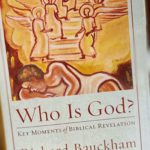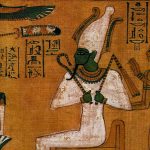The final instalment of Craig Hamilton’s four-part miniseries on the coming of Christ
At Christmas we remember and celebrate the amazing fact that in Jesus God has entered into his world. And it is amazing! It’s completely astonishing. And a little bit offensive, if we’re honest. In the classic book Knowing God JI Packer says “the supreme mystery with which the gospel confronts us [is] not the Good Friday message of atonement, nor in the Easter message of resurrection, but in the Christmas message of incarnation. The really staggering Christian claim is that Jesus of Nazareth was God made man.” Exactly.
The fundamental idea of the incarnation, that is, the idea that Jesus is fully God and fully human; one person with two natures. Saying Jesus is fully God and fully man is so simple to say, but how does it make sense and how can it be true?
The fundamental idea of the incarnation, that is, the idea that Jesus is fully God and fully human; one person with two natures. Saying Jesus is fully God and fully man is so simple to say, but how does it make sense and how can it be true?
Who’s On Third?
In 451 there was a church council convened at a place called Chalcedon. Chalcedon was a residential suburb but it was right opposite Constantinople where the Emperor lived —and he wanted to keep a close eye on this Council. At Chalcedon, they were trying to settle the question of what exactly it did and didn’t mean that Jesus was God made man. They finally settled what had actually happened in Jesus in the incarnation: who and what was he? Chalcedon said that there were two full and complete natures in Jesus—he was fully human and he was fully divine—and that there was a real union between these two natures that occurred in the person of the divine Logos.
Here’s the big take away point: the natures weren’t united to each other or in each other—the natures were united in the person of the Son: the person was primary. If you ask what is Jesus then the answer is: fully divine and fully human. If you ask who is Jesus then the answer is: he is the second person of the Trinity. They realised that the person was the determining and controlling factor. The main thing to say, in any question about what’s going on with Jesus’ incarnation, is first of all to remember that the person is primary: it’s the Son of God who is doing stuff.
State of the Union
This uniting of two natures—one divine and the other human—in one person is what has become known as the hypostatic union. This term sounds a bit complicated and intimidating, but it’s an easier concept to grasp than it first sounds. “Hypostatic” is just the English-izing of the Greek word hypostasis.
Hypostatic Union means a personal union; a union within a person. So far so good. But as soon as you dwell on that idea it starts to run away from you. A union within a person of what? United in what way? The hypostatic union is a unique event, only one person in the history of the universe has ever experienced this kind of union within their person. Everyone you meet has a single nature and in the case of humans it’s a human nature. Every human you meet is a human. Being human is pretty much what it means to be a human. It’s almost a silly thing to say it’s so obvious.
Jesus however, as usual, is unique. Jesus had two natures. He had a divine nature and he also had a human nature. And these two natures were united in his person, which is what the Greek word hypostasis is referring to. It was a hypostatic union; a union within a person. That is, Jesus wasn’t two people—that’s a heresy. Jesus is one person. And he has two complete natures, human and divine. He’s not sort of God and sort of man, or half God and half man, and he’s not a mixture of God and man. He has two natures united in the one person without any damage or change being done to either nature in the process.
If you’ve got this sentence, then you’ve got the material to answer a lot of incarnation questions. Two natures. One person. No changing. No remainder.
What Are We Talking About?
By the time we get to Chalcedon and beyond, a “person” is an agent who is capable of choosing things, doing things and being held responsible for those things. A “person” is who something is and a “nature” is what something is. The person is the inherent and non-transferrable identity of an active agent.
The person of Jesus, the active identity, the who, is the second person of the Trinity, the eternal divine Son. This is the person we’re talking about when we talk about the person of Jesus. Essential to this person is that he possesses a divine nature. Everything it means to be divine, that’s what he is. In the incarnation he took on another nature, a human nature, adding and uniting it to his person. When we talk about a human nature we’re talking about all the things that make humans fundamentally human. This would be things like having a human body, a human soul, a human will. Everything that makes us human, the person of the Son took all of it and united it to himself in becoming the God-man Jesus.
“What” not “How”
Chalcedon didn’t fall into the trap of trying to describe “how” the incarnation happened or “how” the two natures were united. This is a good thing. Most heresies that people have taught around the person of Jesus have come about as a result of people pushing on the “how” question too hard. God doesn’t seem too interested in telling us how it all happened. What he seems to be concerned about is us knowing that it happened.
The other thing Chalcedon did is they spent a lot of words describing what isn’t happening. There are four “withouts” when it comes to the union of the two natures in the person of the Son: it is without confusion and without change, that is the natures don’t mingle and merge into each other and change each other, and it is without division or separation, that is the two natures really are united in the one person.
While the Chalcedonian Definition does have a lot to say about what isn’t happening in the incarnation it does also describe what is happening, and at this point it is clear and precise. What is happening is that Christ definitely has two natures, one divine and one human, with the divine nature being exactly like that of Father and the human nature exactly like the rest of humanity. He possesses both these natures and they’re united together but not mixed or merged together.
Addition
And so the Hypostatic Union is a union within the person of the Son where a real and genuine human nature is added along with the Son’s divine nature without those two natures changing or merging into each other in any way. Jesus is fully man and fully God. The incarnation is fundamentally an addition, it’s an addition of a human nature to the person of the Son and so these two natures, human and divine, are united in his person.
Which means we can summarize all the complicated theology and definitional precision of the Hypostatic Union like this: whatever it is that goes with natures Jesus has two of them, one human and one divine, and whatever it is that goes with the person Jesus has one of. And these two natures are united in the person of the Son, that is, they are united in his hypostasis—his person. And it’s the person that’s primary.
See more on the Incarnation in Craig Hamilton’s recent book Made Man














